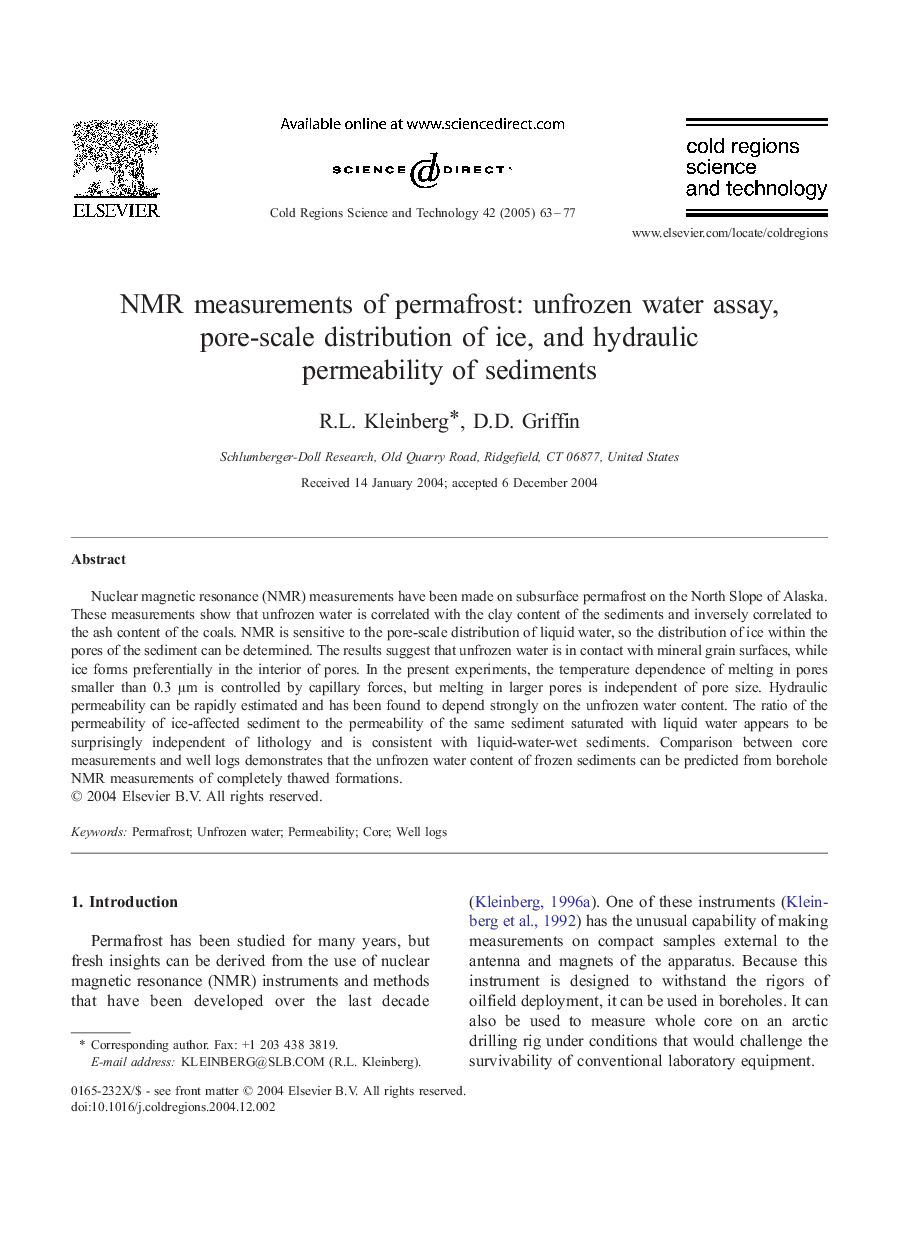| Article ID | Journal | Published Year | Pages | File Type |
|---|---|---|---|---|
| 9521582 | Cold Regions Science and Technology | 2005 | 15 Pages |
Abstract
Nuclear magnetic resonance (NMR) measurements have been made on subsurface permafrost on the North Slope of Alaska. These measurements show that unfrozen water is correlated with the clay content of the sediments and inversely correlated to the ash content of the coals. NMR is sensitive to the pore-scale distribution of liquid water, so the distribution of ice within the pores of the sediment can be determined. The results suggest that unfrozen water is in contact with mineral grain surfaces, while ice forms preferentially in the interior of pores. In the present experiments, the temperature dependence of melting in pores smaller than 0.3 μm is controlled by capillary forces, but melting in larger pores is independent of pore size. Hydraulic permeability can be rapidly estimated and has been found to depend strongly on the unfrozen water content. The ratio of the permeability of ice-affected sediment to the permeability of the same sediment saturated with liquid water appears to be surprisingly independent of lithology and is consistent with liquid-water-wet sediments. Comparison between core measurements and well logs demonstrates that the unfrozen water content of frozen sediments can be predicted from borehole NMR measurements of completely thawed formations.
Related Topics
Physical Sciences and Engineering
Earth and Planetary Sciences
Earth and Planetary Sciences (General)
Authors
R.L. Kleinberg, D.D. Griffin,
